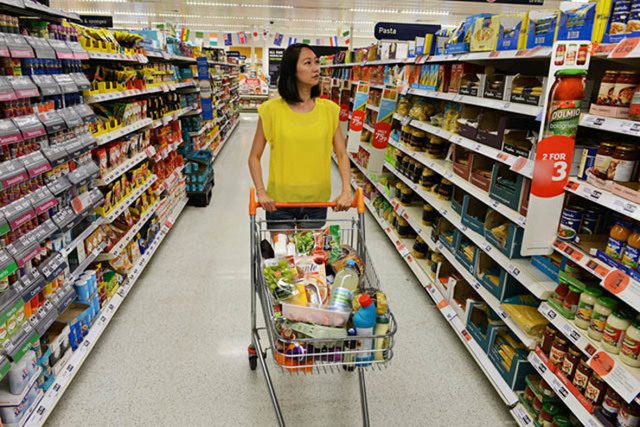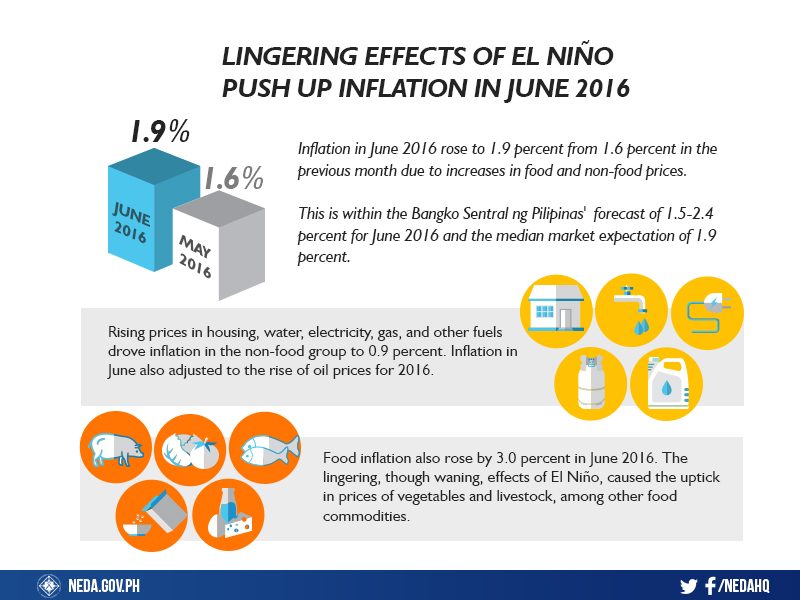SUMMARY
This is AI generated summarization, which may have errors. For context, always refer to the full article.

MANILA, Philippines – Inflation rose slightly in June due to an increase in both food and non-food items as well as the steadily rising price of oil.
Data released by the Philippine Statistics Authority (PSA) on Tuesday, July 5, showed that inflation rose by 1.9% in June, up from the 1.6% recorded in May.
The increase met median market expectation and fell within the Bangko Sentral ng Pilipinas (BSP) forecast of 1.5%-2.4% for the month.
Socioeconomic Planning Secretary Ernesto Pernia attributed the increase to the residual effects of the weakening El Niño and the slight recovery of oil prices. Along with gas and other fuels, housing and electricity prices also rose, pushing non-food inflation to 0.9%.
“International oil prices have yet to recover, but as global demand improves alongside the pressures brought by the Canada wildfires and the political unrest in Nigeria, the biggest oil exporter in Africa, oil prices have reached its highest level in 2016,” Pernia explained.
He did point out, however, that inflation for the first half of the year remained manageable, and said that this “is expected to continue for the rest of the year against a backdrop of expanding productive capacity of the domestic economy and persistently low oil prices.”
Last month, the BSP lowered its inflation forecast to 2% from 2.1% for this year but retained the 3.1% projection for 2017 and 2.6% for 2018.
The manageable inflation so far this year also played a role in the BSP’s decision to keep interest rates steady last month.

Food prices up
Food prices, meanwhile, rose by 3% with the drought in some provinces affecting different food groups, notably vegetables and livestock.
The prices for rice, Filipinos’ food staple, fell -0.5% in June year-on-year, although it was up by 0.2% from the previous month.
“We should intensify monitoring the status of flood control projects and the clearing of drains and waterways. We also need to improve the agriculture logistics chain by constructing more bridges to connect farming areas separated from markets by rivers that are non-traversable during the rainy days,” Pernia said. – Rappler.com
Add a comment
How does this make you feel?
There are no comments yet. Add your comment to start the conversation.